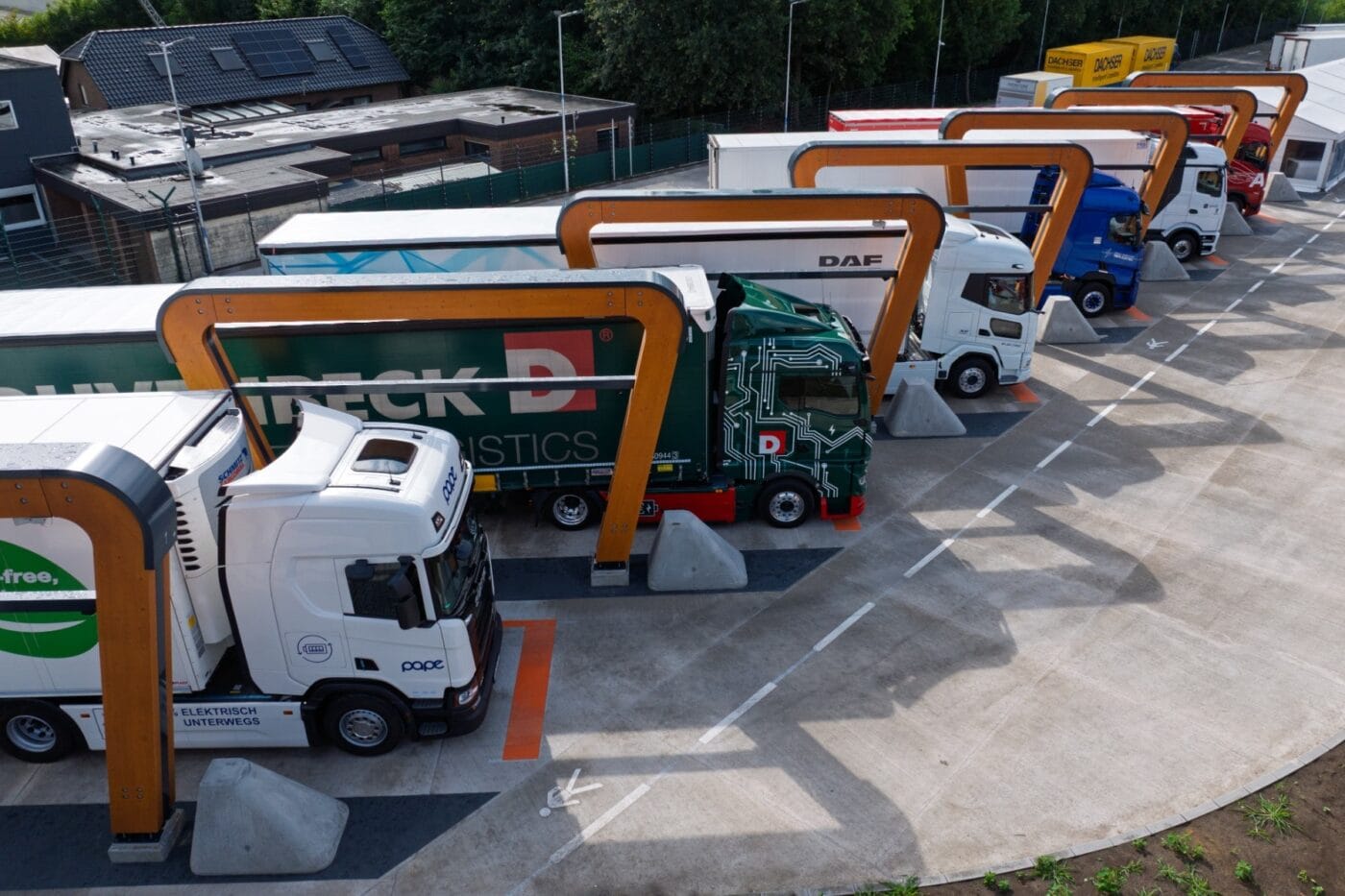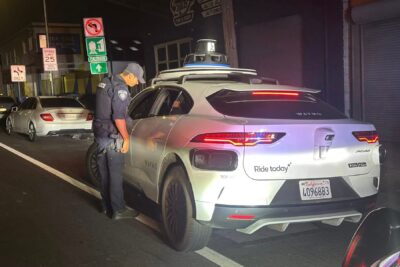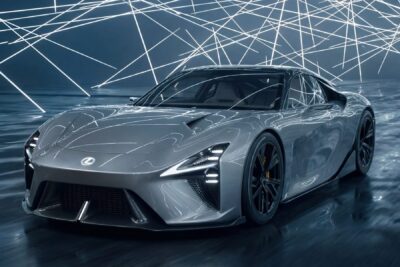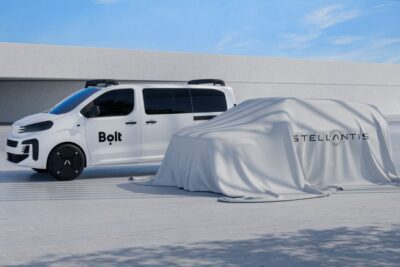
Harnessing the strengths of the EU internal market for electric trucks – Thomas Fabian from ACEA
The European Automobile Manufacturers’ Association (ACEA) represents vehicle manufacturers in the EU, compiles statistics (which we publish regularly) and engages closely with topics such as decarbonising transport, public transport, and the heavy-duty sector. Thomas Fabian is the association’s expert on commercial vehicles and puts the current market developments into perspective. One thing is clear: the industry experienced a downturn in the first half of the year, both for BEVs and across all powertrains.
Fabian, however, offers hope that the transition in powertrains will quickly regain momentum and that electric commercial vehicles can capture significant market shares – provided that the coordination between EU internal market participants works. As Fabian emphasises: “We can’t afford 27 different systems within the Single Market.” Competing with other major nations, such as China, only works when everyone is on the same page.
What page that is will certainly be on the agenda at the Next Truck Conference on 3–4 November in Berlin. Fabian will be one of 50 speakers addressing decision-makers from politics and business at the Estrel Congress Center. The conference motto is “Software, future drives and changing markets: transforming the trucking world.” It will focus on new realities and the perspectives to be shaped in the European truck market. Our interview offers a foretaste of what’s to come.
Mr Fabian, your latest report said that “the first half of 2025 proved challenging for the EU commercial vehicle market.” What’s going on?
After a very strong 2023 and early 2024, the market has cooled noticeably. Freight demand has softened, economic uncertainty is weighing on sentiment, and many transport operators are delaying fleet renewals or holding off new investments. Order backlogs have largely cleared, so today’s registration figures reflect true market demand rather than earlier supply chain constraints. At the same time, many fleets remain cautious, especially on zero-emission trucks, as they wait for more clarity on infrastructure rollout and stable incentive frameworks.
Why are customers so hesitant to buy right now?
Several factors play a role. First, total cost of ownership remains a challenge, particularly for long-haul operations. Second, charging and refuelling infrastructure for heavy-duty trucks is still scarce, and even connecting depots to the grid can take months or years. Finally, policy signals are inconsistent. CO₂-based tolls, energy prices, and incentive schemes vary widely between Member States. Operators, especially SMEs, need clarity and predictability before committing to major investments.
Electric trucks still play a small role. Only 1.5% of EU truck registrations were electric in the first half of 2025. Why is the uptake so slow?
We’re still at the start of the adoption curve. Early movers are deploying battery-electric trucks mainly in urban and regional transport. Long-haul is more complex but will follow once a dense charging network, including megawatt charging, is in place and the TCO clearly favours zero-emission trucks. Manufacturers are expanding their portfolios fast, but customers need confidence in infrastructure rollout, energy costs, and long-term policy. Once these align, uptake can accelerate quickly. The question is whether this will happen fast enough, because by 2030, one in three new heavy-duty trucks must already be zero-emission and the clock is ticking.
Electric buses are already much further ahead. Why are you confident that this success will continue?
The conditions are much more favourable. Bus operations are predictable, charging is done overnight at depots, and public procurement drives demand. In many cities, the TCO of zero-emission buses beat diesel, driven by the right policies. The main challenge now is speed. By 2030, nine in ten new urban buses must be zero-emission, meaning diesel should become the exception. That requires strong political commitment and steady funding to keep replacement cycles on track.
Many say political support is the main bottleneck. Should the EU or national governments be doing more?
Both. The EU and Member States must work hand in hand. The EU should ensure timely and consistent implementation, while national authorities must deliver charging infrastructure, streamline permitting, and set up predictable support schemes. We can’t afford 27 different systems within the Single Market. The Weights & Dimensions Directive is a case in point: the Commission made a solid proposal, Parliament improved it, but Member States risk rolling it back. That would extend the payload penalty for zero-emission trucks and slow down the transition.
The transition looks very uneven across Europe. Some countries move fast, others are far behind. Since trucks cross borders every day, is that a disadvantage compared to large, centralised countries like China?
It can be, but it doesn’t have to be. Europe’s strength is its Single Market, if we make it work properly. Coordination is key. If Member States clearly align on objectives, roll out infrastructure along key corridors, and make cross-border charging seamless, we can create the thriving home market European manufacturers need to compete globally. What worries us most are the short timelines and the level of coordination required to deliver on them.
Recently, there’s been renewed talk about combustion engines – as range extenders or plug-in hybrids. Is the focus shifting again?
The direction is clear: we’re moving towards zero-emission technologies. But internal combustion engines will remain part of the mix for years, especially in heavy-duty transport. Operators have diverse needs, and manufacturers must offer suitable solutions. Battery-electric will cover most use cases, but hydrogen will also be vital. Even by 2030, two-thirds of new trucks will still be ICE, and those should not run on fossil diesel. Flexibility is essential, supported by a regulatory framework that enables rather than restricts the transition.
With Sany entering Europe in 2026, Chinese truck makers are following their success in the electric bus segment. How do you view this competition?
Competition drives innovation and efficiency, which is good. But it must be fair. European manufacturers meet the highest global standards for safety, sustainability, and quality. New entrants must meet the same. Europe should also ensure reciprocity and a genuine level playing field. Our strength lies in innovation, reliability, and long-standing partnerships with transport operators.
Finally, let’s look into the crystal ball. Where will electrification stand in five years?
That depends entirely on how fast the enabling conditions come together. If Europe delivers around 50,000 public truck chargers, including megawatt charging, several hundred thousand depot chargers, and a few hundred hydrogen stations by 2030, and sets a framework that makes zero-emission trucks the better TCO choice, then reaching the one-third ZEV share needed to meet the CO₂ targets is ambitious but nit impossible. But we’re far from that point, and time is short. If progress continues to lag, the entire value chain will feel the consequences, with manufacturers facing excessive penalties for factors beyond their control.
Mr Fabian, thank you for the interview.
The interview is part of electrive’s media partnership with the NextTruck conference on 3 and 4 November in Berlin.





0 Comments